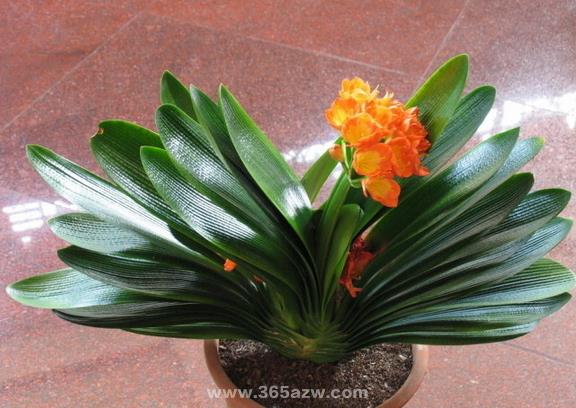What about yellow leaves?
The gentleman orchid has a high ornamental value. However, the orchid will also encounter trouble in the growth process, sometimes the leaves will turn yellow, and then I will introduce it to you.

Introduction of gentleman orchid
There is a kind of plant, the name is very beautiful, the appearance is also very beautiful, her name is gentleman orchid, for the big flower gentleman orchid is a perennial herb. Fleshy roots white, unbranched. Basal leaves numerous, leathery, alternate, neatly arranged, fan-shaped, evergreen. The stem is a short and shrinking stem, and many valuable varieties of Cymbidium were selected and bred by artificial hybridization, according to their plant type, leaf length, ratio of length to width, leaf tip shape, leaf vein obscure, flower color, fruit type and so on. Its planting methods are mainly sowing method and plant method, at the same time, its nursing requirements are relatively high.

The reason for the yellowing of the leaves of Cymbidium
Temperature
The suitable temperature for the growth of Cymbidium is 1525 ℃. When the temperature difference between day and night is 8: 12 ℃, it is the most suitable for the growth of Cymbidium. When the summer temperature exceeds 30 ℃ for a long time, it goes into semi-dormancy. At this time, if the air humidity is less than 60%, the leaves of Cymbidium will become shallow, yellow and even wilted; if the humidity is higher than 90%, the stems and leaves will grow.
Humidity
Magnolia is a humid plant, which requires high humidity of the growing environment. Its most suitable relative humidity range is 70% to 80%. In this humidity environment, the leaves of Cymbidium are green, the veins are clear, the leaves are short, wide and neat, and the ornamental value is high. If the basin soil is too dry for a long time and the temperature is high, it is easy to make the leaves yellow. However, too much watering for a long time can easily lead to hypoxia, hinder the normal respiration of plants, and lead to root rot and even death.
Soil fertilizer
Gentleman orchid likes loose and fertile sandy soil, soil consolidation and insufficient supply of fertilizer will make the leaves yellow and affect flowering. Generally, fertilizers can be applied in spring and autumn in one year. The rotten-resistant leaves must be fermented before they can be used. Without fermentation, the roots are easily burned. The magnolia must change the soil once a year.

The solution to the yellowing of Cymbidium leaves
All the leaves of Magnolia turn yellow
Solution: all yellow, often the symptoms of fever, the solution: immediately shade, and cut off the yellow leaves.
The leaves of Cymbidium are withered and sagging.
Solution: withered or sagging leaves are symptoms of lack of water. Watering should grasp the principle of no dry, no watering, no stagnant water in the basin.
The leaves of Cymbidium are partially yellowed.
Solution: local yellowing, probably fire roasting, cold wind blowing, hot water, acid erosion. You can rule out external causes in time. Sometimes, the lack of nitrogen fertilizer may cause plants to suffer from chlorosis. The decrease of chlorophyll causes the leaves to turn yellow. In this case, fermented cake fertilizer and water can be added. There are differences in breeding methods with different seasons.
The leaves of Cymbidium are wrinkled and yellow spots.
Solution: root burning caused by excessive fertilization. The soil should be changed immediately, and the roots should be soaked in 0.1% potassium permanganate aqueous solution for 20-30 minutes, then rinsed with clean water, dried, cut off the rotten roots, and replanted with plant ash on the wound.

The above is the introduction of how the leaves of Cymbidium turn yellow. I hope you like it.
- Prev

The morphological characteristics of Prunus mume flower and the introduction of flower language
The morphological characteristics of Prunus mume flower and the introduction of flower language
- Next

How to raise the happiness tree? Introduction to the maintenance methods of Happiness Tree
How to raise the happiness tree? Introduction to the maintenance methods of Happiness Tree
Related
- Wuhan Hospital Iron Tree Blooming Result Was Instantly Frightened by the Gardener Master
- Which variety of camellia is the most fragrant and best? Which one do you like best?
- What is the small blue coat, the breeding methods and matters needing attention of the succulent plant
- Dormancy time and maintenance management of succulent plants during dormancy
- Minas succulent how to raise, Minas succulent plant pictures
- What are the varieties of winter succulent plants
- How to raise succulent plants in twelve rolls? let's take a look at some experience of breeding twelve rolls.
- Attention should be paid to water control for succulent plants during dormant period (winter and summer)
- Watering experience of twelve rolls of succulent plants
- Techniques for fertilizing succulent plants. An article will let you know how to fertilize succulent plants.

